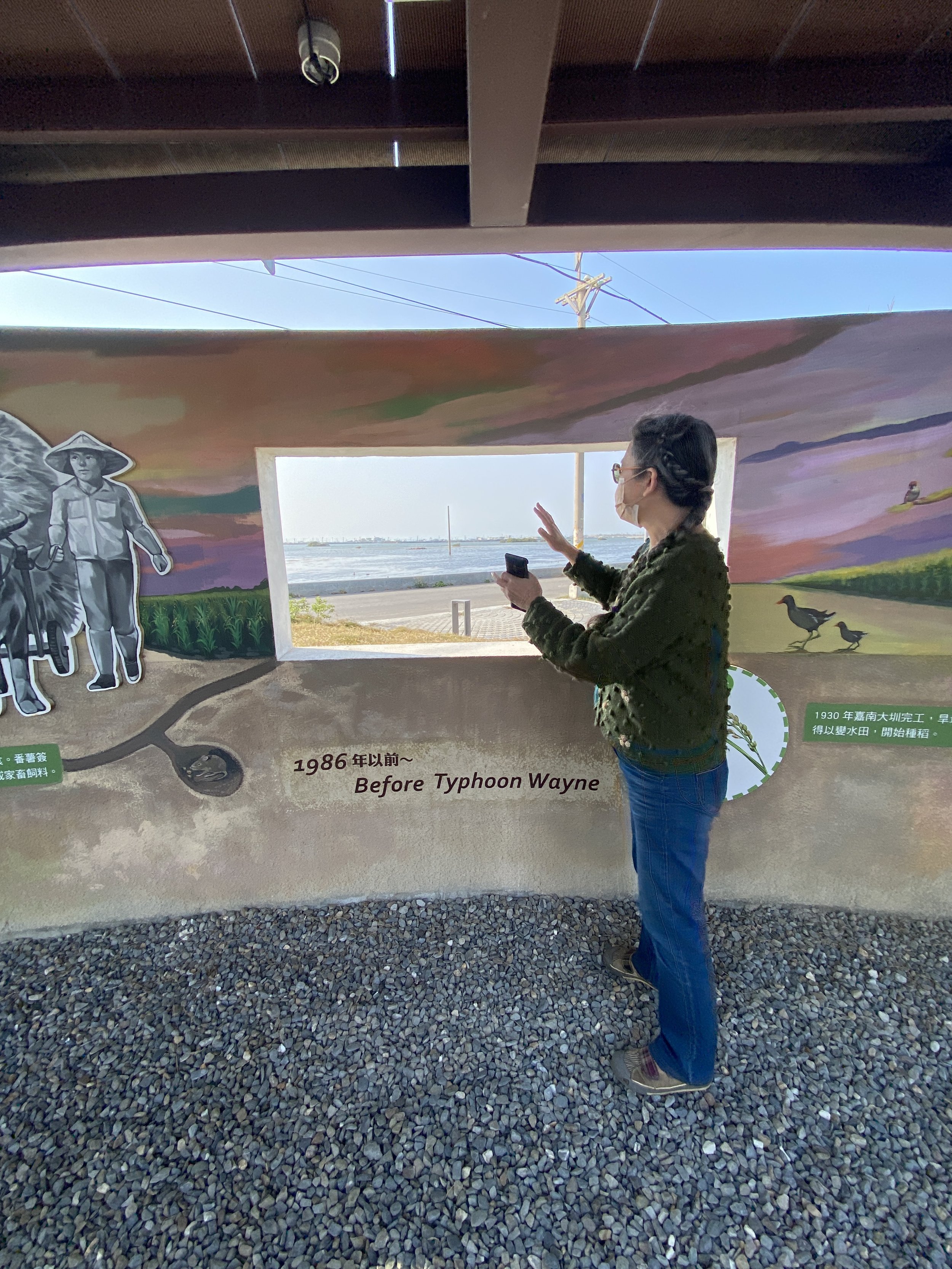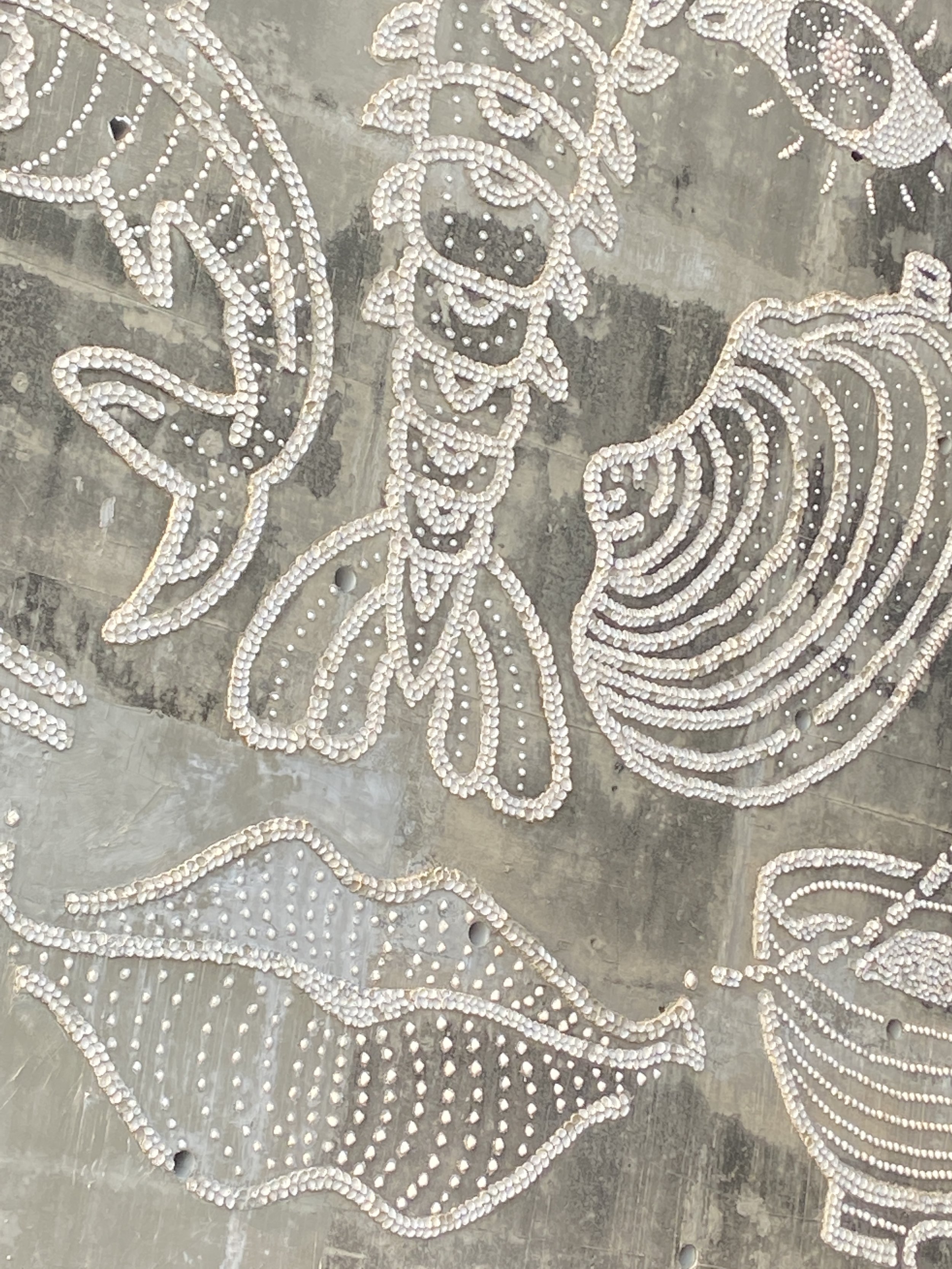ARTIST SERIES: Chao-Mei Wang’s Story of Adaptation and Art in Chenglong, Taiwan
Chao-Mei Wang showing the mural she designed which highlights life before (see mural) and after (outside window) Typhoon Wayne.
An abandoned sinking house (see road height to the left).
Chao-Mei helped design this park. She repurposed oyster line and buoys to add a natural and historic element to the walkway.
A few weeks ago I visited Chao-Mei Wang in Chenglong, Taiwan. When I applied for the Watson in 2020, Chenglong Wetlands International Art Residency was one of my original contacts. While the arts component has since ended, Chao-Mei kindly took me around for the day to visit the many beautiful art installations and pieces in Chenglong.
Chenglong is situated below sea-level and it is only because of the sea walls that the community has been able to survive. Chao-Mei explained how 1986 Typhoon Wayne (and subsequent typhoons) destroyed the seawalls, flooded the community, and turned former rice patties into wetlands. These typhoons also salinated the groundwater, making the area unsuitable for farming.
While many lost their houses and farmland, Chenglong villagers adapted by turning their flooded fields into fish and shellfish farms. Wildlife has also returned to the area due to several “natural” wetlands. Chenglong has become an inspiration for other Taiwanese communities struggling with coastal erosion, sea level rise and extreme weather events.
The Chenglong Wetlands International Environmental Art Project invited artists to make nature-based sculptures (including a mural made from clamshells - first image below), and today the community is known for its art focus. I was so lucky to see one of Kuei-Chih Lee’s 2022 natural sculptures (last photo on right) called Seed.
Local women drilling holes into oyster shells to make new oyster lines
Chao-Mei was incredibly modest about her role in bringing art to Chenglong, but she either helped to design or worked with the artists who made essentially everything she showed me today. Today, she works as an independent curator, but still plays an active role in the Chenglong community.
An added bonus was getting to meet some of the local fisherwomen as they harvested and prepared the oyster lines.
Huge thank you to Chao-Mei and to Jane Ingram Allen for connecting us!









